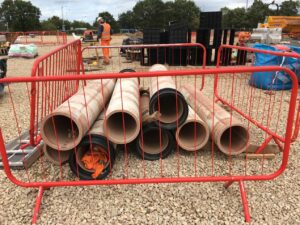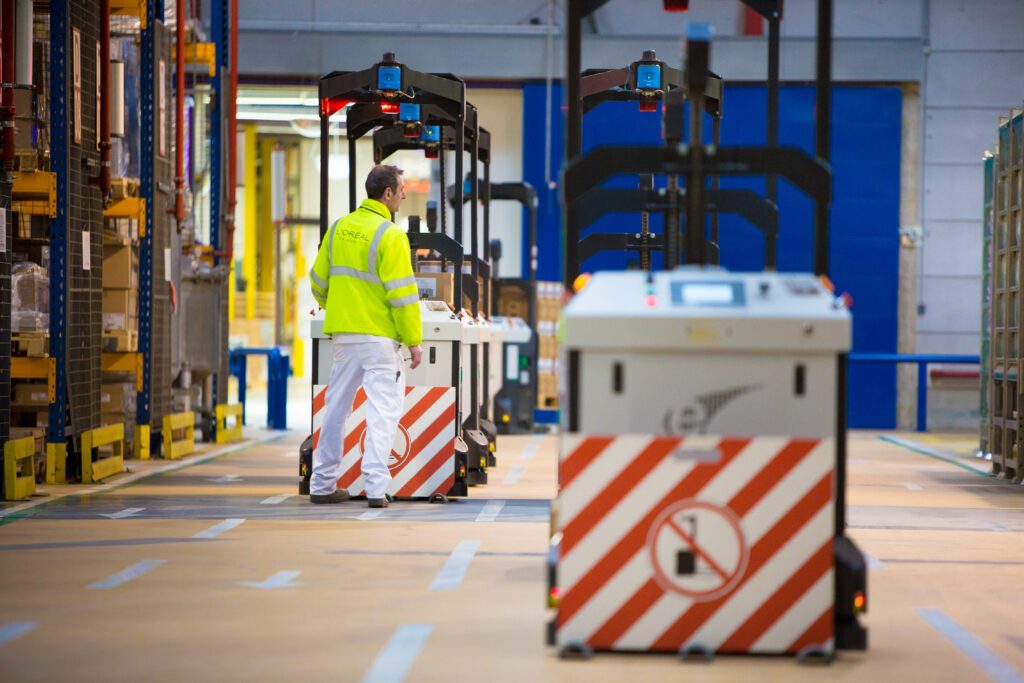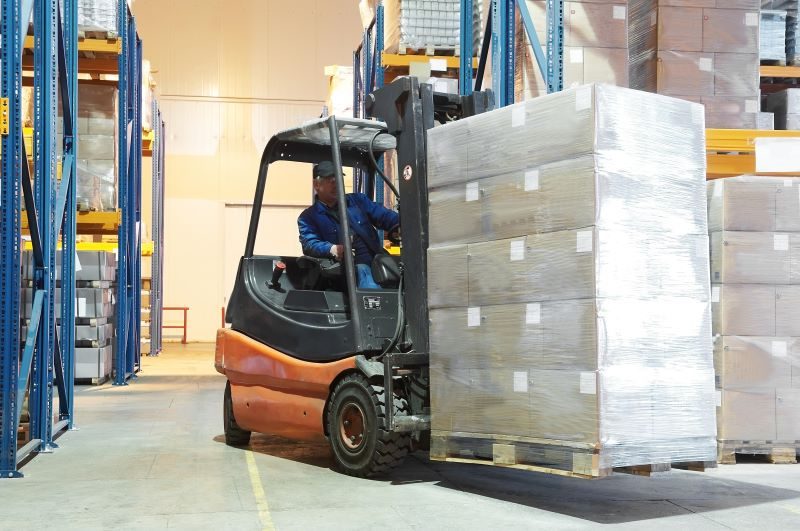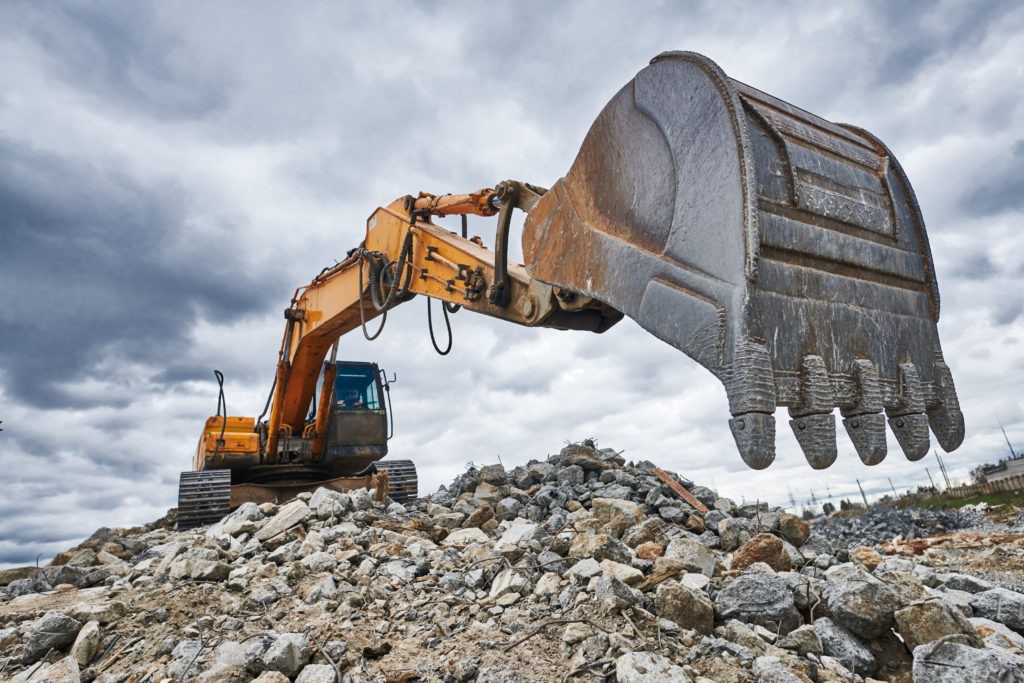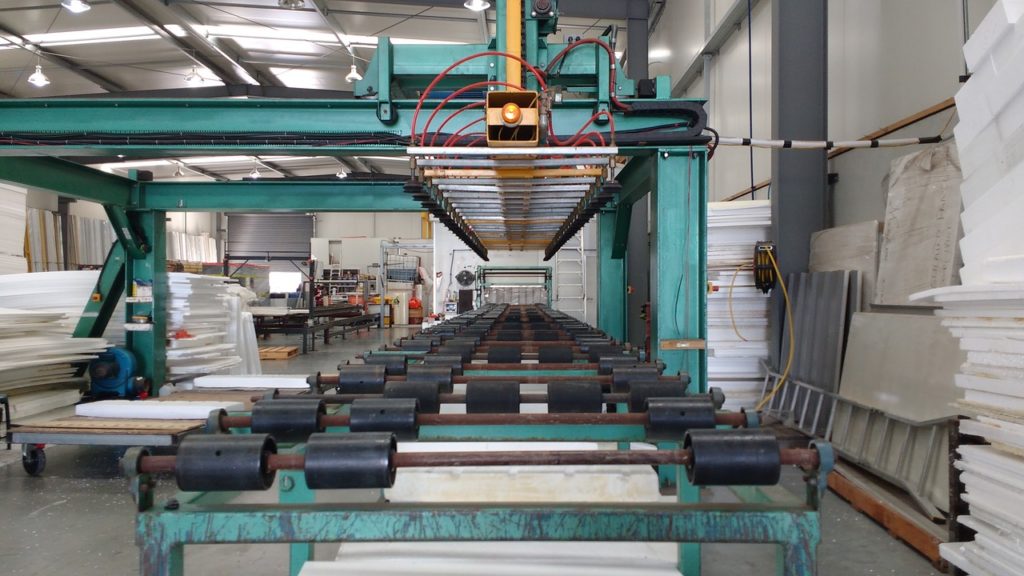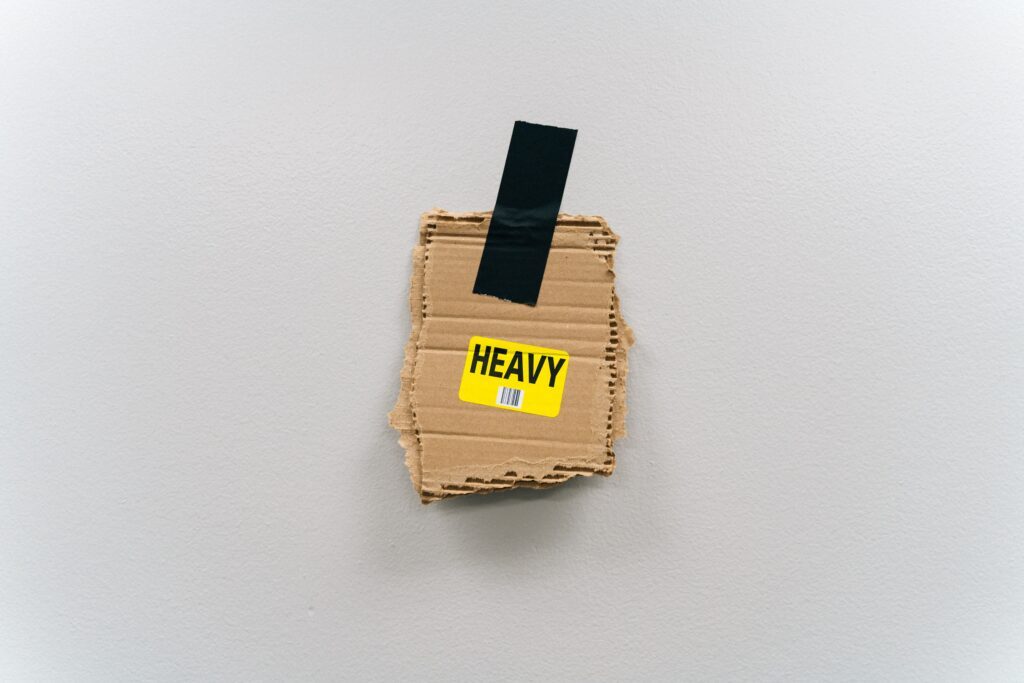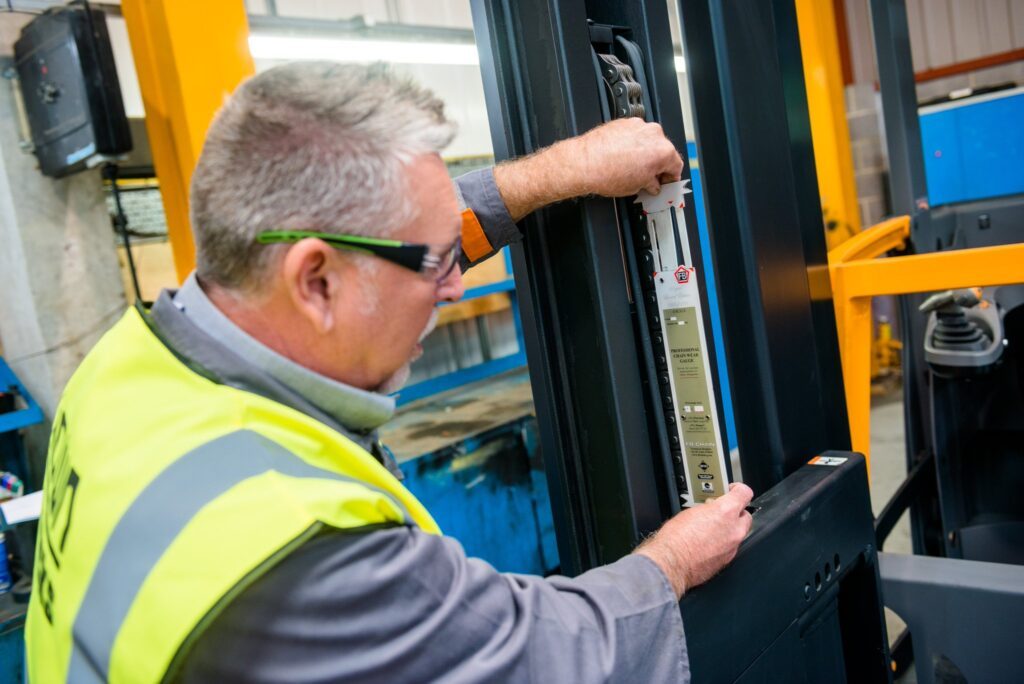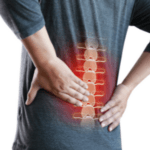Ten years on from the introduction of the Lifting Operations and Lifting Equipment Regulations, there is still confusion over the examination requirements they lay down, says Derrick Bailes.
Few would deny that the introduction ten years ago of the Lifting Operations and Lifting Equipment Regulations (LOLER) 1998 represented a major step forward for the lifting sector.
Marking the end of a six-year transition from the old UK-based legislation to a framework built around European directives, they established a modern, risk-based approach to lifting applications across all industries. So, the tenth anniversary of their arrival serves as an opportune moment to consider the impact of the Regulations, and why some employers still appear to misunderstand a number of their most critical elements.
Many of these shortcomings relate to the legal requirement under LOLER to subject all lifting equipment to regular ‘thorough examination’. Broadly speaking, this is designed to determine whether equipment is fit for the coming period of service. However, while there are still organisations that fail to grasp the basics, the key problem often lies not so much in a failure to implement a proper programme of thorough examinations but in placing too great a reliance on such procedures to ensure the continuing safety and integrity of lifting devices.
Examining equipment
Anyone with a degree of familiarity with the legislation and its supporting codes of practice should recognise both what constitutes a thorough examination and when one should be undertaken. As a starting point, it is worth clarifying what equipment is actually involved.
Under LOLER, lifting equipment includes any equipment that is used at work for lifting or lowering loads, including attachments used for anchoring, fixing, or supporting it. In practice, this means an extremely wide array of lifting equipment and accessories, routinely used in areas as diverse as manufacturing, construction, distribution, and the offshore sector. It is also worth stressing that it is often the most simple and economic items, such as slings and lifting attachments, which play the most safety-critical roles. They are also typically the most vulnerable to damage, so when it comes to ensuring that lifting equipment is fit for purpose, it is important that nothing is overlooked.
As for what constitutes a thorough examination, the Code of Practice for the Safe Use of Lifting Equipment (CoPSULE)1 defines it as a “visual examination, carried out by a competent person carefully and critically and, where appropriate, supplemented by other means, such as measurement and testing, in order to check whether the equipment is safe to use”. Under previous legislation, thorough examination did not encompass any testing of the equipment. But LOLER encompass procedures such as proof-load, non-destructive, light-load, and operational testing.
Lifting equipment should be subjected to a thorough examination before it is put into service for the first time. However, LOLER offer an exemption, provided that: the equipment has not been used before; and, in cases where an EC declaration of conformity is required, the employer has received such a declaration not more than 12 months before the equipment is put into service.2 For any equipment that has to be installed, such as an overhead travelling crane, a thorough examination is necessary to ensure that it has been carried out correctly and is safe to operate.
LOLER inspection frequency
Reflecting a more flexible and risk-based doctrine, LOLER offer employers two options for establishing the frequency of thorough examinations. The first and most common option is for examinations to take place at maximum fixed intervals: six months for equipment that is used for lifting people and accessories; and 12 months for other lifting equipment.
Alternatively, a LOLER competent person can draw up an examination scheme, where intervals are based on the frequency and nature of use, the operating environment, and the rate at which a particular piece of equipment will deteriorate. Whatever approach is used, equipment should also be thoroughly examined in the event of exceptional circumstances that might adversely affect its safety, such as accidental damage or shock loading.
It is also worth drawing attention to recommendations that have recently been made for the offshore and sub-sea sectors. In these industries, there is a number of additional risk factors that should be taken into account.
The combination of salt water and air can clearly lead to accelerated corrosion of the component parts of lifting equipment, but this is far from the whole story. Other factors that can have a detrimental effect on the integrity of lifting devices employed offshore include: proximity to inflammable materials, flare stacks, or hot condensate lines; temperatures outside the 0-25°C range; exposure to chemicals and acidic environments; restricted working space; and the additional dynamic loads imposed on lifting equipment by the movement of vessels and/or installations.
As a result, it is advised that every block or hoist destined for such applications should be subject to a thorough examination before being put into service, and that intervals between future thorough examinations should be reduced to six months.
Competence
Experience of LOLER over the past ten years indicates that there is still considerable confusion surrounding the need for a ‘competent’ person to undertake a thorough examination. Indeed, in the UK, there is no official licensing system for persons who undertake such work.
On the plus side, the requirement simply for ‘competence’ means that employers do not need to use someone capable of inspecting, say, a complex tower crane, if all that needs to be assessed are some simple slings. On the negative side, however, there is obvious potential for misinterpreting what actually constitutes competence.
In relation to thorough examination, competence is best defined as a combination of technical knowledge of the equipment to be inspected and the ability to put that knowledge into practice. Regarding the former, a well-established diploma programme should provide an industry-recognised qualification. The latter, meanwhile, demands practical experience in the field and, in particular, the judgement to be able to identify and assess the various factors that might lead to a piece of equipment being rejected. Certain personal characteristics, such as honesty and integrity, should also be evident in individuals who carry out such duties.
In the UK, thorough examinations are usually undertaken by an independent third-party organisation. However, under LOLER there is no legal requirement for this to be the case. Assuming that staff who meet the aforementioned criteria are available, there is no reason why properly organised manufacturers, suppliers, maintenance organisations, and users cannot inspect their own equipment to the standards required.
Equally, given the nature of the equipment involved, one would hope that anyone interested in the promotion of workplace health and safety could easily recognise the need for periodic rigorous examination. Perhaps the real danger, however, lies in placing too much faith in this process. Put simply, too many employers are effectively gambling that equipment will remain in a safe condition from one period to the next — a time-span which can last up to 12 months.
Last resort
The correct approach is to use thorough examinations not as the front line of defence to prevent the use of potentially dangerous equipment but as a longstop. There is a number of reasons why this should be the case. Firstly, any item of equipment will deteriorate with age and usage. In many cases, this is a slow process as, if properly monitored, there will be ample warning before equipment becomes dangerous.
However, lifting equipment often endures a particularly hard life. In some environments, for example, corrosion can rapidly cause equipment to malfunction. Exposure to heat, strong sunlight, or chemicals can also have very detrimental effects.
Generally, most people are aware that each item of lifting equipment is rated for a working load that should not be exceeded. Unfortunately, many types of lifting equipment are vulnerable to damage every time they are used, even when well within the working load limit. Significantly, such equipment tends to be the most simple, commonplace items, such as slings and load-lifting attachments. Their vulnerability lies in the fact that they are in direct contact with the load. For the same reason, failure has very serious consequences for the load, as well as any plant, building structures, or staff in the vicinity.
In-service inspections
For all these reasons, it is vital that thorough examinations are applied in conjunction with an equally rigorous programme of ‘in-service inspection’. This should be designed to detect the type of damage that can occur every time lifting equipment is used.
In contrast to thorough examinations, the in-service inspection is typically a visual process, in some cases supplemented by simple tests, and conducted by staff capable of identifying obvious defects. It need not be unduly time-consuming or bureaucratic, but a successful inspection regime is generally based on effective control of all lifting equipment on a particular site.
In the absence of such a system, various departments and individuals may be inclined to keep their equipment in private stores or toolboxes, where it can all too easily escape inspection. So, in all but the smallest operations, the best policy is for every item of lifting equipment to be retained within a central storage area. The controller of such a facility can then implement an appropriate system, which ensures that only equipment that has passed an inspection is issued, and that it is only released to those properly trained in its use. A record of inspections should be kept, and unserviceable equipment withdrawn. The controller clearly plays a key role in terms of inspecting equipment before it is released, but neither the LOLER training nor the facilities required for inspection are too involved.
Staff who use the equipment also play an important part in the inspection regime. All must be encouraged to report any problems with, or damage to, equipment. In this respect, the creation of a ‘no-blame’ culture is vital so staff feel free to highlight damage without fear of recrimination. Equally, it must be remembered that lifting equipment will often be used for several operations before it is returned. Staff using such equipment must be trained to inspect it before use and, if necessary, withdraw it. The same applies to equipment that remains in situ, such as slewing jibs and electric overhead travelling cranes.
Summary
There can be little doubt that LOLER, along with broader legislation such as the HSWA and the Provision and Use of Work Equipment Regulations, have brought about some real improvements in the safety of overhead lifting in the UK. Nevertheless, it remains a significant cause of death and serious injury and, after falls from height and being struck by a moving vehicle, represents the most common cause of fatal injuries to workers in the UK.3 The construction sector tends to figure prominently in these statistics, while the offshore sector has also experienced particular problems.
The causes of such accidents are varied and typically include failures in planning, supervision, and the use of untrained staff. However, sound equipment is undoubtedly another cornerstone of a safe lifting programme.
The lifting-equipment sector has not been immune from the effects of globalisation, and has witnessed a dramatic increase in the volume of very low-cost equipment being imported from low-wage economies, such as the Far East and Eastern Europe. While one should not generalise about quality, the need for greater vigilance is apparent. In-service inspection and thorough examination are mutually supportive elements of an overall regime designed to ensure that equipment remains safe to use throughout its working life.
By following LOLER, and by implementing a system that delivers effective control and issue of equipment backed up by in-service inspection and thorough examination, employers can ensure that the chances of potentially dangerous equipment slipping through the net are kept to an absolute minimum.
References
1 The Lifting Equipment Engineers’ Association (2006): The Code of Practice for the Safe Use of Lifting Equipment, sixth edition, www.leea.co.uk
2 An EC declaration of conformity is required for any item within the scope of the Machinery Directive, and includes both lifting machines and accessories. The declaration is made either by the manufacturer, or by whoever is responsible for placing the lifting equipment on the European market. It should be passed on through the supply chain to the employer.
3 http://www.hse.gov.uk/statistics/causeinj/index.htm

